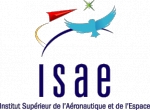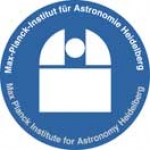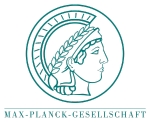Displaying items by tag: research center
Marshall Space Flight Center (MSFC)
The George C. Marshall Space Flight Center (MSFC) is the U.S. government's civilian rocketry and spacecraft propulsion research center. It is the largest center of NASA.
MSFC's first mission was developing the Saturn launch vehicles for the Apollo moon program. Marshall is today the agency's lead center for Space Shuttle propulsion and its external tank; payloads and related crew training; International Space Station (ISS) design and assembly; and computers, networks, and information management. Located on the Redstone Arsenal near Huntsville, Alabama, MSFC is named in honor of General of the Army George Marshall.
The center also contains the Huntsville Operations Support Center (HOSC), a facility that supports Space Shuttle launch, payload and experiment activities at the Kennedy Space Center, ISS launch and experiment operations. The HOSC also monitors rocket launches from Cape Canaveral Air Force Station when a Marshall Center payload is on board.
Russian Space Research Institute (IKI)
The Russian Space Research Institute is in performing, within the Russian Academy of Sciences, investigations of Outer Space, Solar System planets and other objects of the Universe.
It is primary in charge of long-range planning and elaboration of space research programs of which a considerable part is performed within the framework of international space research cooperation.
(Russian: Институт космических исследований Российской Академии Наук, Space Research Institute of the Russian Academy of Sciences, Russian abbreviation: ИКИ РАН, IKI RAN)
Institut Supérieur de l'Aéronautique et de l'Espace (ISAE)
The Institut Supérieur de l'Aéronautique et de l'Espace or ISAE is the name for the French aerospace engineering school.
It is located in Toulouse, France. The "Institut Supérieur de l’Aéronautique et de l’Espace" (ISAE) was created in 2007 from the merger of two prestigious French Engineer School: SUPAERO (founded in 1909) and ENSICA (founded in 1945).
The Institute provides high-level Graduate Programs in engineering for Space and Aerospace domains, Master’s degrees, Postgraduate Specialized Masters, PhD degrees. This opens to the students a wide range of career opportunities: engineering, research and development, logistics, consulting, finance, etc.
ISAE also develops a very active research policy.
Khrunichev Research and Production Space Center
Khrunichev Research and Production Space Center is a Moscow-based producer of spacecraft and space-launch systems, including the Proton and Rokot rockets.
The company's history dates back to 1916, when an automobile factory was established outside Moscow. It soon switched production to airplanes and during World War II produced Ilyushin Il-4 and Tupolev Tu-2 bombers. A design bureau, OKB-23, was added to the company in 1951. In 1959, the company started developing intercontinental ballistic missiles, and later spacecraft and space launch vehicles. The company designed and produced all Soviet space stations, including Mir. OKB-23, renamed to Salyut Design Bureau, became an independent company in 1988. In 1993, the Khrunichev Plant and the Salyut Design Bureau were joined again to form Khrunichev State Research and Production Space Center.
In the 1990s, the company entered the International Launch Services joint-venture to market launches on its Proton rocket. Khrunichev subsequently became a successful launch service provider on the international space launch market.
Astrophysics Research Institute (ARI)
The Astrophysics Research Institute (ARI) is a research centre in astronomy and astrophysics at Liverpool John Moores University (United Kingdom). The institute was formed in 1992.
Max Planck Institute for Astronomy (MPIA)
The Max-Planck-Institut für Astronomie (Max Planck Institute for Astronomy) is a research institute of the Max Planck Society.
It is located in Heidelberg, Germany, adjacent to the historic Landessternwarte Heidelberg-Königstuhl astronomical observatory.
The institute was founded in 1967.
Max Planck Institute for Astrophysics (MPA)
The Max Planck Institute for Astrophysics (MPA) is a Max Planck Institute, located in Garching, Germany (North of Munich). The institute is one of many scientific research institutes belonging to the Max Planck Society.
The MPA is widely considered to be one of the leading institutions in the world for theoretical astrophysics research.
Air Force Research Laboratory (AFRL)
The Air Force Research Laboratory (AFRL) is a scientific research organization operated by the United States Air Force Materiel Command dedicated to leading the discovery, development, and integration of affordable aerospace warfighting technologies; planning and executing the Air Force science and technology program; and provide warfighting capabilities to United States air, space, and cyberspace forces. It controls the entire Air Force science and technology research budget.
The Laboratory was formed at Wright-Patterson Air Force Base, Ohio on 31 October 1997 as a consolidation of four Air Force laboratory facilities (Wright, Phillips, Rome, and Armstrong) and the Air Force Office of Scientific Research under a unified command. The Laboratory is composed of 8 technical directorates, 1 wing, and the Office of Scientific Research. Each technical directorate emphasizes a particular area of research within the AFRL mission which it specializes in performing experiments in conjunction with universities and contractors.
Since the Laboratory's formation in 1997, it has conducted numerous experiments and technical demonstrators in conjunction with NASA, Department of Energy National Laboratories, DARPA, and other research organizations within the Department of Defense. Notable projects include the X-37, X-40, X-53, HTV-3X, YAL-1A, Advanced Tactical Laser, and the Tactical Satellite Program. (source: Wikipedia, Oct. 2012).
ONERA
ONERA is a French aerospace research center.
It is a public establishment with industrial and commercial operations, and carries out application-oriented research to support enhanced innovation and competitiveness in the aerospace and defense sectors. ONERA is an acronym for Office National d'Études et de Recherches Aérospatiales.
Since January 2007 Onera was dubbed “The French Aerospace Lab” to enhance its international visibility, and also adopted a brand baseline, “Return on Innovation”.
Onera carries out a wide range of research for space agencies, as well as for the French defense procurement agency, DGA. Onera also independently conducts its own long-term research to anticipate future technology needs. It focuses on scientific research, for example in aerodynamics for concrete applications on aircraft, the design of launchers and new defense technologies, such as drones (unmanned aerial vehicles (UAVs)).
Onera also uses its research and innovation capabilities to support both French and European industry. Onera’s customer-partners include EADS (Airbus, Eurocopter), Safran (Snecma, Turbomeca, Sagem), Dassault Aviation, Thalesand other major industry players. Innovative small businesses are also encouraged to call on the expertise of Onera’s scientists and engineers, and to take advantage of technology transfer opportunities.
Onera has contributed to a number of landmark aerospace and defense programs in recent decades, including Airbus, Ariane, Rafale, Falcon, Mirage and Concorde.
Liège Space Center
Liège Space Center (French: Centre spatial de Liège, CSL) is a research center of the University of Liège in Belgium. It holds a hundred people, half of whom are engineers and scientists. The activities of the CSL are specialized in optics, space technologies and space environment testing.
The activity of the Liège Space Centre is focused on three areas:
- It is a test centre for certifying optical space equipment and payloads before they are put into orbit. Vibration, optical, thermal and even cryogenic tests are conducted in thermal environments of up to -270°C, i.e. 3 degrees above absolute zero.
- It designs, develops and certifies scientific space instruments. These optical instruments are designed to enable unique scientific observations and use the latest advances in technology.
- New technology development activities are performed on the one hand as a support service to the other space activities of the Liège Space Centre, and on the other hand within the scope of non-space regional or European projects.
The Liège Space Centre therefore brings together many specialists: opticians, mechanics, heat engineers, physicists, specialists in micro-manufacturing, as well as electronics specialists. They work in direct cooperation with the university’s laboratories, but also with major European centres such as the European Space Agency, astrophysics laboratories and technology centres. The Liège Space Centre also works in collaboration with non-space industries at regional and European level, where its skills are used for a wide range of applications such as micro-manufacturing, optical coatings, solar energy, etc.











